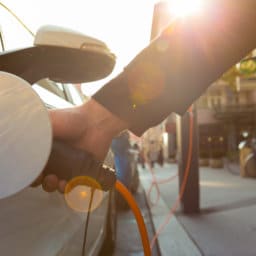Currently in the United States there are twelve states, referred to as the “Dazzling Dozen” in a report by Environment America, that are paving the way to a more renewable country.
The 12 states that are a part of Environment America’s “Dazzling Dozen” include the following: Arizona, California, Colorado, Delaware, Hawaii, Maryland, Massachusetts, Nevada, New Jersey, New Mexico, North Carolina and Vermont. With California, Arizona, New Mexico, Nevada, New Jersey and Hawaii currently in the lead for solar capacity. Due to public policies and incentives these states are setting an example to the other 38 states in the U.S. on how harnessing power through the sun’s energy is possible. These states have set up policies allowing homeowners, businesses and utilities to utilize the sun’s energy by installing a solar array on their rooftop. According to Environment America’s recent report, the “Dazzling Dozen” account for only 28 percent of the U.S. population, but 85 percent of the nation’s installed solar electricity capacity.
With the declining panel prices and advancements in technology, utilizing the sun’s energy is becoming one of the preferred types of energy sources in the U.S. Therefore, the U.S. has more than three times as much solar photovoltaic (PV) capacity today, as in 2010, and more than 10 times as much as in 2007. According to research compiled by the Solar Energy Industries Association (SEIA), in the first three months of 2013, solar power accounted for nearly half of the new electricity generating capacity in the United States.
With the “Dazzling Dozen” leading the way by example, the U.S. solar industry hopes other states will follow, allowing the U.S. to receive 10 percent of their energy from solar by 2030. Solar industry leaders and experts feel this is an optimal time to invest in solar power due to the declining price of the modules and advancements in panel efficiency. Not only will solar power save energy consumers money in the long run, but it also produces 91% less emissions and pollution than gas-fired power plants.
According to Environment American’s report, “More than half of the 50 states have the technical potential to generate more than 20 percent of the electricity they currently use from solar panels on rooftops. In the western states of California, Arizona, Nevada and Colorado, the share of electricity that could be replaced with rooftop solar power exceeds 30 percent”
Research done at the National Renewable Energy Laboratory (NREL) estimated that rooftop PV systems could generate more than 20 percent of the electricity used in the United States each year. In addition, researchers from the Environmental Science & Technology publication found that solar energy could supply one-third of all electricity in the Western US by 2050, while reducing emissions 80% below levels in 1990. A team at Berkley University of California found using a virtual simulation of western America’s electrical grid that if the U.S. reaches the goals set out in the Sunshot initiative, the western U.S. could save $20 billion by 2050.



